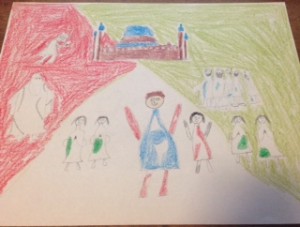The Wedding of Zein
ø
I really liked this story because of the uniqueness of the character Zein and the responses it elicited form my classmates. Among many great points, one that I hadn’t thought of was the feminist implications of Zein and the treatment of women throughout the story. While I viewed the women’s glorification by Zein as not necessarily misogynistic or sexist, I realized the view of many of my peers was that while Zein’s behavior may have not been intentional in objectifying women, it led to the objectification of those girls he admired through-out the village. Even the mom’s wished for their daughters to be pedestaled by Zein because it quickly led to a more qualified suitor approaching her daughter. The women were also subject to much controversy in our discussion. Their image is supposed to be one of virtue, chastity and modesty however the closest girl to transcending this paradigm, Ni’ima can only do so because she fits this image. In what is slightly paradoxical Ni’ima struggles with her forced conformity to the structures of the society. However it is unclear how she would react to being in such a position is she was poor and ugly. Surely her physical attributes make it easier for her to carry herself above the expected behavior of a woman in this society. This story also featured the presence of an Iman in what was seemingly a critique of the Islamic hierarchy and authority of these religious leaders. The Iman often elicits an action contrary to how he intended his message to be interpreted. This is a result of his out of touch expectations and poor communication skills. This fact originally escaped me but after reflecting on the first week’s readings after our group discussion about the Iman in the story and the general place of them in society, I felt much more comfortable with identifying the purpose of his presence in the story. The picture illustrates the prevalence of the characters and Islamic stereotypes based on colors. The more color in the figure, lead by Zein and Ni’ima, the truer the character holds to the author’s view of Islam.
